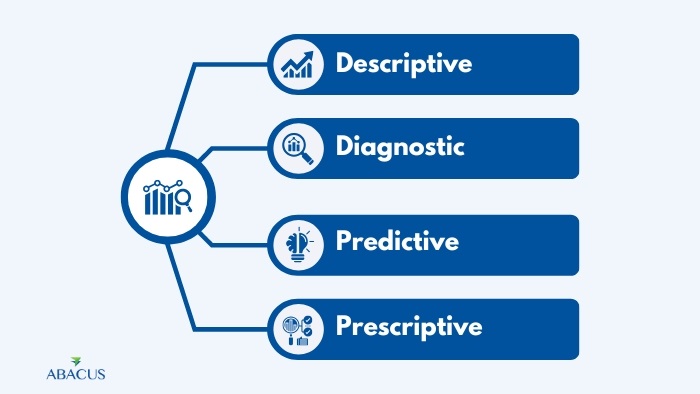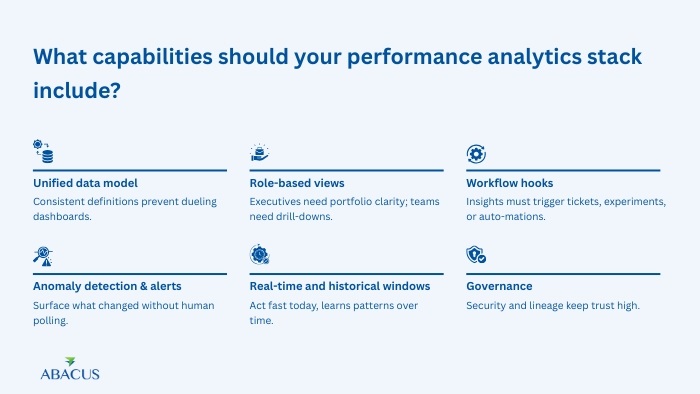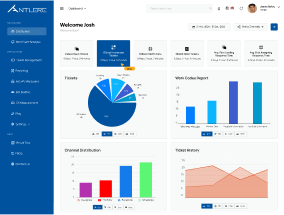Performance Analytics: How Does It Drive Smarter Business Decisions?
Performance analytics refers to the art of gathering, calculating and visualizing operation and financial indicators to know how effectively your organization is functioning. In contrast to static reports, it transforms raw numbers into actions, which elevate efficiency, lessen risk, and quicken growth. In a world where business results can turn in an overnight, the winners are those who substitute hunches with evidence and make improvement a routine.
What is Performance analytics?
In other words, performance analytics is a structured method to track outcomes, diagnose and work on improvements. It combines measures, context, and performance analysis so that the leaders are able to observe what is working, what is not, and where to invest next.
Integrated into the weekly and quarterly rhythms, it becomes the foundation of business performance- aligning people, processes, and platforms around the measurement of results rather than the activity due to it being activity.
What does performance analytics do?
Performance analytics monitors KPIs in revenue, cost, productivity, experience and risk and uses the performance analysis to identify trends and outliers. Teams may drill down to a company dashboard, region, product, journey or squad.
In any established configurations performance analytics of service operations or product teams of app performance analytics alerts identify emerging problems before they escalate.
The outcome is an actual time-sharing image of business performance that all people can take action.
What are the 4 types of analytics?
To move from data to decisions, high-performing teams weave together four complementary lenses:

- Descriptive: What happened? Summarizes history so you can baseline business performance.
- Diagnostic: Why did it happen? Uses comparisons, associates, and root-cause methods to explain variance.
- Predictive: What will likely happen? Models risk, demand, or churn so you can prepare instead of react.
- Prescriptive: What should we do now? Recommends the next best action—change a process, reallocate capacity, or launch a test.
This stack is used to drive marketing performance analytics (prediction of campaign ROI) and business process analytics (elimination of workflow bottlenecks).
What’s the difference between reporting and performance analytics?
Reporting is the question of what has happened–it enumerates numbers. Performance analytics provide answers to the question of why it occurred, what will occur next and what should be done about it.
Reporting explains that tickets increased by 18% but analytics indicates the peak is solely in one queue following a policy change and advises to revert to the previous rule and man a temporary backlog of current tickets.
That sort of jump between observations to prescription–is where performance analysis beats its reports.
How does performance analytics apply across business functions?
- Finance: Portfolio perspectives of margin, cash and NRR bridge strategy to business performance goals; business analytics reporting reports are segmented by unit economics
- Customer & service ops: Performance analytics trends SLA risk, agent capacity, and deflection so leaders can pre-empt backlog.
- Product & engineering: App performance analytics tracks latency, errors, and feature adoption; experiments prove which fixes move KPIs.
- Growth & brand: Marketing performance analytics unifies spend, pipeline, and LTV to optimize channel mix, not just clicks.
- Operations: Business process analytics Every handover or operational movement is timed to remove wasted motion and standardize best paths.
What is another word for performance analytics?
Depending on context you’ll hear business performance analytics, operational analytics, company analytics, or even business intelligence. Labels differ, but the aim is constant: make decisions that measurably improve outcomes.
What capabilities should your performance analytics stack include?
- Unified data model: Consistent definitions prevent dueling dashboards.
- Role-based views: Executives need portfolio clarity; teams need drill-downs.
- Real-time and historical windows: Act fast today, learns patterns over time.
- Anomaly detection & alerts: Surface what changed without human polling.
- Workflow hooks: Insights must trigger tickets, experiments, or automations.
- Governance: Security and lineagekeep trust high.

What benefits can organizations expect from performance analytics?
- Quick, smarter decisions: Leaders respond to facts, not on stories.
- Increased efficiency: Business process analytics expose cost and cycle time inflating bottlenecks.
- Anticipated risk control: Predictions and warnings prevent the impacts of incidences on customers.
- Revenue lift: Marketing performance analytics and product insights move the dollars to what actually drives the risk ratio.
- Hitting targets: visible measures make strategy a day-to-day practice; teams of people will gather around tangible improvement.
How do you implement performance analytics without the chaos?
Begin with one business question (e.g., “Where are we lacking SLAs and why?). Write source-of-truth metrics, wire a canonical data pipeline, and publish a running dashboard with drill-downs. Include alerts and basic playbooks that transform insights into actions. Test every month; only grow when adoption is profound. Use the practice as a product: versioned, owned, and improved.
Performance analytics is more than dashboards—it’s a decision system. Companies can improve their business performance, cut down on waste, and keep making wins quarter after quarter by combining descriptive, diagnostic, prediction, and prescriptive views with tight execution.
At Abacus BPO, we design and run analytics programs those turn insights into outcomes standing up the right views, and wiring the workflows until insights reliably become impact. When you’re ready to move from reporting to results, we’ll help you make analytics your competitive edge.









